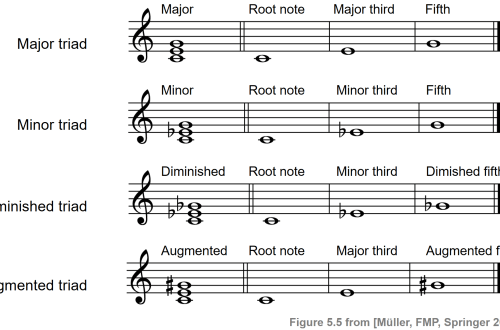
Small seventh chords and their conversions
Contents
What other seventh chords are popular in jazz music?
A minor seventh chord is a chord that consists of four sounds arranged in thirds, and contains an interval of a minor seventh between the lower and upper sounds. It was this interval that entered both the name of the chord (seventh chord) and its designation (number 7).
The names of the sounds included in the seventh chord (in any) show the names of the intervals from the lowest sound to the one in question:
- Prima. This is the lowest sound, the root of the chord.
- Third. Second sound from the bottom. Between this sound and the prima is the interval “third”.
- Quint. Third sound from the bottom. From prima to this sound – the interval of “fifth”.
- Seventh. Upper sound (top of the chord). Between this sound and the base of the chord is the seventh interval.
Depending on the type of triad that is part of the chord, small seventh chords are divided into three types:
- Small major seventh chord
- Small minor seventh chord
- Small introductory seventh chord (also called semi-reduced)
Let’s consider each type separately.
Small major seventh chord
In this type of seventh chords, the lower three sounds form a major triad, which is reflected in the name of the chord.
Minor major seventh chord (С7)

Figure 1. A major triad is marked with a red bracket, a minor seventh is marked with a blue bracket.
Small minor seventh chord
In this type of seventh chords, the bottom three sounds form a minor triad, which is also evident from the name of the chord.
Small minor seventh chord (Сm7)

Figure 2. The red bracket indicates a minor triad, the blue bracket indicates a minor seventh.
Small introductory seventh chord
In this type of seventh chords, the lower three sounds form a diminished triad. This type of chords can be built on the introductory steps of the mode: on the second step of the harmonic major or natural minor, as well as on the seventh step in the major.
Seventh chord inversions
The inversion of a seventh chord is formed by moving the lower notes up an octave (as with any chords). The name of the transferred sound does not change, i.e. if the accept is moved up an octave, it will remain a prima (it will not be a “seventh”, although it will actually be the top of a new chord).
The seventh chord has three inversions (the names of its inversions are based on the intervals included in the inversions):
First appeal. Quintsext chord
Denoted ( 6 / 5 ). It is formed as a result of the transfer of the prima up an octave:

Figure 3. Construction of the first inversion of a major seventh chord (C7).
Look at the drawing. In the first measure, the C7 seventh chord is depicted (drawn in gray), and in the second measure, its first inversion C 6 / 5 . The red arrow shows the shift of the prima up an octave.
Second appeal. Terzkvartakkord
Denoted ( 4 / 3 ). It is formed as a result of the transfer of the prima and third by an octave up (or the third of the first inversion, which is shown in the figure):

Figure 4. Option for obtaining a terzquartaccord (2nd reversal)
In the first measure, a seventh chord (C7) is depicted, in the second – its first inversion (C 6/5 ) , in the third measure – its second inversion ( C 4/3 ) . Sequentially transferring the lower sound up an octave, we got a third quarter chord.
Third appeal. Second chord
Denoted by (2). It is formed as a result of the transfer of the prima, thirds and fifths of the seventh chord up an octave. The figure shows the process of sequentially receiving all three invocations of the seventh chord:

Figure 5. The process of sequentially receiving all three invocations of the seventh chord.
In the first measure, the seventh chord (С7) is depicted, in the second – its first inversion (С 6/5 ) , in the third measure – its second inversion (С 4/3 ) , in the fourth – the third inversion (С2). Sequentially moving the lower sounds up an octave, we got all the inversions of the seventh chord.
And now it’s time to see clearly how it works, so:
Small seventh chords
Results
You got acquainted with the varieties of the small seventh chord and learned how to build their appeals.





